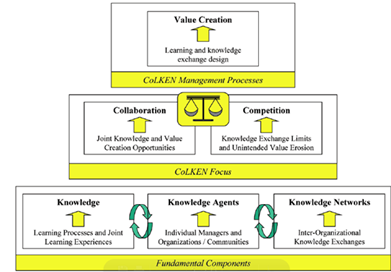Knowledge Management in an age of Coopetion
- Hadas Gil

- Feb 1, 2016
- 3 min read
Updated: Nov 28, 2024

What do Microsoft and Apple have in common? What do Harvard and MIT have in common, and what do American Airlines and Delta?
First of all, they are all competing organizations each in their respective branches. Secondly, they have all understood that in order to survive this complex world of business they must follow a new approach to management based on maintaining professional relevance by sharing knowledge and understanding that cooperating with competitors is vital for ensuring growth.
For example, Apple and Microsoft have for years been developing products which will compete in global markets. Microsoft created Windows, Apple distributed its own operating systems. The resulting reality was binary: you could either choose Microsoft or choose Apple, but couldn't have both. In recent years, both companies have successfully cooperated in order to allow consumers access to the competition's products. The latest version of windows is synchronized with Apple's ITunes and Apple computers enable users to install the Microsoft Office Package. Similarly, American Airlines and Delta Airlines which compete in the field of flight ticket sales yet cooperate in the field of research and development for Bowing (a mutual supplier) thus saving costs.
This trend is referred to as Coopetition (cooperation combined with competition). Most definitions of the term refer to a relationship between two or more parties which combines the logic of cooperation and the reasoning behind competition. It requires sharing knowledge between competitors which may lead to a breakthrough for both organizations while consciously taking the risk this knowledge might serve each competitor individually.
The aspiration to maintain professional relevance and cooperate with competitors is based on two Knowledge Management trends currently on the rise:
Firstly, an inflation of knowledge, which led to organizations realizing that no single body controls knowledge absolutely. The current reality dictates a multiplicity of knowledge/information sources and requires finding ways to collect it from the field or any other party holding it.
Secondly, knowledge development perceived as a 'professional sport'. Diversification of thought and discourse initiation have become vital tools and values in all fields of development. Therefore, developing new and relevant knowledge mainly takes place when values, thinking charts and various work approaches collide.
Coopetition seems like a natural response to the aforementioned reality.
The following chart is a Coopetition-oriented Knowledge Management chart known as COLKEN (Coopetitive Learning and Knowledge Exchange Networks).

Knowledge Management under Coopetition
Claudia Loebbecke University of Cologne, Germany
The base of the chart consists of charting the knowledge, knowledge agents and the channels/relationships through which the knowledge is transmitted.
The chart's second level offers a delicate balance between cooperation and competition.
This KM template's pinnacle is designing the process in order to allow learning and knowledge which satisfies both participating parties.
Exchange of professional knowledge, shared learning and the creation of "reservoirs" of resources all require locating issues/fields in which cooperation is required and possible as well as reviewing how said issues/fields can enhance the organization's value. Furthermore, organizations need to practice a high degree of trust and not conceal information and knowledge vital to the process and overcome the usual tendency to maintain ambiguity since this will critically harm the cooperation.
While this type of process potentially offers very high value, it also consists of several significant risks and implementation difficulties. Firstly, organizations which use this approach must review whether the potential value gained due to the process is indeed higher than its investments and risks. Secondly, cooperation and trust must be practiced yet as strategies are usually less popular than the usual competition. Therefore, resources must be invested on a daily basis in order to instill different thought patterns into those involved in this "Coopetition". Thirdly, there might be a certain A-symmetry between competitors that wish to cooperate; organizations should therefore avoid a situation in which a 'small' player swallows a 'big' player. A fourth and last issue is working in a setting of uncertainty. Coopetition knows only a starting point yet does not define a finishing line. Therefore, both (or more) organizations should consider the different difficulties they might encounter along the way and offer possible solutions before embarking on this promising yet uncertain path.




Comments